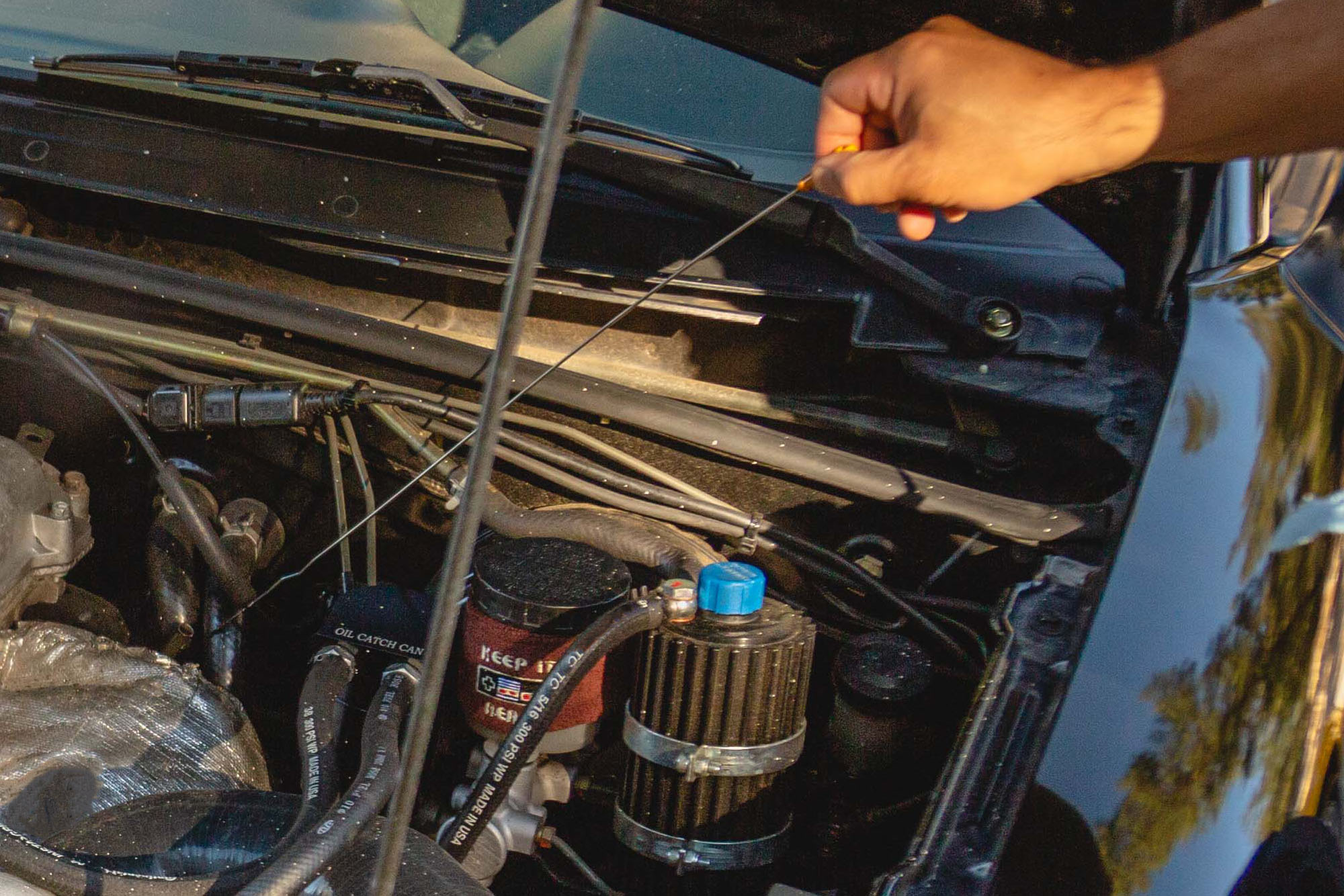What Is an Oil Catch Can?
This simple part can help your engine run better and cleaner.
 Manuel Carrillo III | Capital One
Manuel Carrillo III | Capital One
Over time, deposits caused by the internal-combustion process can build up in a car's engine and cause a variety of performance problems. An oil catch can is designed to trap these deposits before they can accumulate. While most cars don't come with oil catch cans from the factory, installing one is a common modification that can help keep your engine running smoothly.
How an Oil Catch Can Works
Many modern gasoline-powered engines are equipped with a hose that runs from the crankcase, which houses the crankshaft, to the intake manifold, which provides the engine with air. While this system prevents pressure from building up in the crankcase, it also allows a small amount of oil to make its way into the intake manifold, where it can build up.
Usually about the size of an engine oil filter, an oil catch can plugs into this system and traps the oil before it can reach the intake manifold. It's a simple part that's not powered or managed by the car's onboard computer. Air slows down as it enters the catch can, so the oil vapor it contains becomes liquid and drops to the bottom of the can. The air then continues its path to the intake manifold.
By keeping oil out of your engine's intake manifold, a catch can help prevent deposits that can cause engine problems, including hard starts, a rough idle, sluggish acceleration, and poor fuel economy. Deposits can also increase your car's emissions, which can make it harder to pass a smog test.
Oil Catch Cans Are Relatively Easy to Install and Maintain
Since vehicle manufacturers do not typically include oil catch cans in cars, you'll likely need to turn to the aftermarket to install one. You can buy one from a variety of vendors for less than $250.
Installing a catch can is a relatively straightforward job that requires no special tools, though it's best left to a professional if you've never worked on a car before. You might need to drill holes in the firewall to install the can's bracket, for example.
Don't forget to empty the collection of oil periodically by using the drain plug at the bottom of the can. How quickly the can fills up will depend on its size and on the type and the condition of the engine it's linked to.
Cars That Might Benefit From an Oil Catch Can
Engines that are turbocharged, direct injected, or both may benefit from an oil catch can.
Turbocharged engines generate more blowby, or leakage, which in turn increases the amount of pressure that needs to be evacuated from the crankcase. Direct-injected engines are more susceptible to deposit-related problems because the fuel is injected directly into the cylinders, so it's not able to clean the back part of the intake valves the way it does in an engine fitted with a port-type fuel injection system.
Written by humans.
Edited by humans.
 Ronan Glon
Ronan GlonRonan Glon is an American journalist and automotive historian based in France. He enjoys working on old cars and spending time outdoors seeking out his next project car.
Related articles
View more related articles